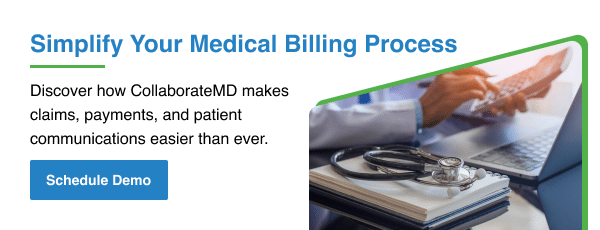Medical billing and medical coding are often lumped together when discussing healthcare administration. While the processes do intersect, it is important to understand the differences when comparing medical billing vs. medical coding, because each has its own function in a healthcare organization.
In simple terms, medical billing is about getting payments, while medical coding is about documenting patientMedical billing and coding are essential to the healthcare revenue cycle, but many people don’t fully understand the difference between the two. In this guide, we’ll explain what medical billing and coding are, how they work together, and the skills needed for each career path. information with codes.
For jobseekers interested in a career in either billing or coding, the two specialties have different responsibilities and skill sets required to succeed on the job. Billing is more people-oriented, whereas coding is more data-heavy. It is also important to consider the amount of medical coding terminology or knowledge of insurance practices you want to learn.
Practitioners should also know the difference between medical billing and medical coding because both processes are important for the healthcare revenue cycle. Billing and coding ultimately help providers receive payment for the work they do.
In this article, we’ll give an overview of what is medical billing vs. medical coding, how billers and coders interact with providers and insurance companies in the healthcare industry, and various certification exams and online programs available to start a career in either role. We’ll also discuss challenges in medical billing and coding today and how technology is changing these aspects of healthcare administration.
See how our solution simplifies both medical billing and coding.
What Is Medical Billing and Coding?
Medical billing and medical coding are often mentioned together—but they play very different roles in the healthcare revenue cycle. Coders convert diagnoses and procedures into standardized code sets like ICD-10, CPT, and HCPCS, while billers use those codes to create, submit, and track insurance claims.
In This Blog, You’ll Learn:
- The key responsibilities of medical coders vs. medical billers
- How both roles impact claim accuracy, payment speed, and denial rates
- Why understanding the difference is essential for practice efficiency and revenue cycle success
- How modern medical billing software supports both functions through automation and integration
Whether you’re new to healthcare admin or looking to improve workflows, this blog offers a clear breakdown of these two essential pieces of the billing puzzle.
| Category | Medical Billing | Medical Coding |
| Primary Role | Submitting claims, following up | Translating procedures into codes |
| Interacts With | Insurance companies, patients | Healthcare providers, EHR systems |
| Skills Needed | Communication, billing software | Attention to detail, knowledge of CPT/ICD |
| Certification Options | CBCS, CMRS | CPC, CCS, CCA |

What is Medical Coding?
Medical coding involves assigning numeric or alphanumeric codes to diagnoses and procedures. The purpose of medical coding is to translate medical documents into a standardized language that can be used for billing, reimbursement, and record-keeping between healthcare providers and institutions.
The two main code sets used in the United States are the American Medical Association’s Current Procedural Terminology (CPT) and the International Classification of Diseases, Tenth Revision (ICD-10) by the World Health Organization. The ICD-10 has two subsets, the Procedural Coding System (ICD-10-PCS) used primarily in inpatient and hospital settings and the Clinically Modified (ICD-10-CM) code set for clinical and outpatient settings. These diagnostic and procedure codes are used across public and private healthcare systems and updated annually.
When a hospital or medical practice receives a new patient, they need to learn the patient’s medical history to provide the best treatment. But thousands of diagnoses, procedures, tools, and services exist, and clinicians need to get up to speed on medical records in a short amount of time.
Medical codes allow healthcare professionals to efficiently share patient information between organizations. Instead of reading a myriad of documents, practitioners use the shorthand medical codes as a common language to communicate complicated details in just a few letters and numbers.
Coding also helps finance teams understand why patients received the treatments and services for which providers are seeking reimbursement. Healthcare organizations bill patients and insurance companies by quantifying their work in medical codes. Accurate, up-to-date coding is the key to optimizing revenue and ensuring practitioners get paid for every service they provide.

Responsibilities of a Medical Coder
Medical coding jobs involve a great deal of reading, analysis, and document processing. After each patient visit, medical coders review documents such as lab results, prescriptions, and transcriptions of physician notes to verify their completeness. They may ask clinicians to clarify inconsistent information or fill in missing details on a patient’s medical records.
A certified professional coder then uses their knowledge of medical terminology to decide which information meets medical coding standards. They translate a patient’s medical records into billable, industry-recognized alphanumeric codes, including information about diagnoses, treatments, procedures, and complications. These codes are compiled in a claim which is then sent to the medical biller for review.
Coders may conduct additional research and patient data analysis for reimbursement from health insurance companies. They also support compliance efforts by staying up to date on government regulations and standards, and by regularly auditing medical records.
What is Medical Billing?
Medical billing refers to the processes by which healthcare providers receive payment for their services, whether from patient balances or claims to insurance companies, Medicare, and Medicaid.
Billing can be divided into two categories: front-end and back-end. Front-end billing tasks, such as verifying patient eligibility and requesting pre-authorization of services from insurance providers, occur before an appointment. Co-payments are often calculated at this stage as well.
Back-end billing occurs after the provider has seen the patient. Once billing teams receive the medical codes describing a patient visit, they generate an itemized claim for reimbursement by insurance companies or government agencies.
After a claim is sent, medical billers are responsible for tracking unpaid insurance claims and other unfulfilled invoices until the provider receives payment. The ultimate goal of medical billing is to ensure providers are appropriately paid for the treatments and care they provide.
Ideally, medical billers ensure providers are reimbursed while also optimizing revenue for the medical practice or healthcare organization. Some insurance companies have filing deadlines which nullify coverage when missed. Effective management of the billing cycle prevents unnecessary revenue loss.

Responsibilities of a Medical Biller?
Medical billers act as a liaison between patients, providers, and insurance companies on a daily basis, facilitating and expediting the healthcare revenue cycle. In advance of an appointment, the biller gathers a patient’s insurance information and medical records, then verifies their coverage with the insurance provider.
After a patient visit, billers begin the medical claims process with health insurance agencies. In addition to drafting and sending bills to payers, billing teams also track and record payments received, follow up about unpaid claims, resolve issues, and appeal denied claims.
A large proportion of practitioners’ revenue leakage stems from incorrect billing. Successful medical billers need excellent organization and attention to detail to keep track of their employers’ many open claims.
Medical billers also send invoices to patients for outstanding balances after insurance payouts. In the case of late or unfulfilled payments, billers are responsible for reaching out to patients regarding payment collection.
Customer service skills are helpful for the job, since medical billers help patients process payments over the phone. Patients may also have questions about their bills, so billers need to be knowledgeable about typical charges in their field.
How are Medical Billing and Medical Coding Related?
Medical billing and medical coding are both aspects of healthcare administration related to a provider’s revenue stream. In the claims process, coding takes place before a bill is sent to insurance providers.
Medical billers use the codes assigned by medical coders to prepare and submit claims to health insurance companies. Sometimes, billers may be responsible for reviewing codes for accuracy before sending medical claims. While some billers might perform medical coding responsibilities, this is not always the case.
By translating services into a standardized code, medical coders enable communication between billing and insurance teams. Insurance companies rely on medical codes to understand which services a patient received, allowing them to match codes to the patient’s plan and determine coverage for each service.

Which Healthcare Professionals are Responsible for Medical Billing vs. Medical Coding?
Large healthcare facilities with high patient volumes often require a staff of both coding specialists and billing specialists. For instance, a hospital may have medical coders who focus on outpatient coding and a separate staff for inpatient coding.
Smaller businesses may consolidate medical billing and coding into one role to streamline the claims process and limit operating expenses. Therefore, it is possible for a person to work as both a medical biller and a medical coder.
For instance, a family practice physician with their own medical practice may hire an administrator who is certified for billing, family medicine coding, and pediatric coding. Whether practitioners choose to keep medical billing and coding separate or combine them is a matter of business size, budget, and degree of specialization.
What Kind of Training is Required to Become a Medical Biller or Medical Coder?
While some entry-level billing and coding positions only ask for a high school diploma or equivalent GED, employers value applicants with degrees in health information technology, health care administration, and other related fields. Medical billing and coding are specialized fields, and a fundamental understanding of the health care industry makes candidates more competitive in the job market.
Various colleges offer online programs to complete an associate’s degree in medical billing or coding. Additionally, the American Health Information Management Association (AHIMA) and the American Assocation of Professional Coders (AAPC) offer certification exams at several different levels for both medical billers and coders.
Beyond a higher education, aspiring coders can pursue the Certified Coding Associate (CCA) certification or the Registered Health Information Technician (RHIT) certification, both offered by AHIMA. AAPC has an exam for Certified Professional Billers as well as various specialty coding exams, such as pediatric coding and cardiovascular coding.
What are Some Common Challenges Associated with Medical Billing and Medical Coding?
Most of the challenges in both medical billing and medical coding stem from natural human error combined with the highly technical and ever-changing nature of modern medicine. Specialists need a broad knowledge of medical terminology, strong attention to detail, and excellent organizational skills to process medical documentation for billing.
Because medical codes are often entered by hand, erroneous code assignments—even a mistyped digit in an online form—can result in insurers denying claims. Billers often file multiple insurance claims for a single patient visit, so these errors can have a ripple effect in unfulfilled payments.
Insurance companies often have deadlines for filing claims after patient visits. If billers and coders miss these deadlines, their employers may not receive reimbursement for services. Given the daily influx of new cases and different deadlines from various insurance companies, it’s all too easy for payments to slip through the cracks.
Healthcare administrators also contend with frequent changes in codes and local regulations, which can lead to errors in filing claims if billers and coders are not up-to-date. Both the CPT and ICD-10 are reviewed and revised every year, and compliance standards can change at any time at either the federal or state level.

What Role Does Technology Play in Medical Billing and Medical Coding?
Recent technological innovations have made both medical billing and medical coding much more efficient, but their adoption is not yet industry standard. There is still ample opportunity for healthcare organizations to take advantage of new technologies to streamline their revenue cycle management.
Filing individual claims is time-consuming, especially for specialty providers who must file hundreds of claims every week. Some medical billing software allows users to create and send multiple claims at a time, so workers are not completing such high volumes of paperwork by hand.
Some medical billing and coding software can flag inconsistencies before claims are sent to insurance companies, reducing the likelihood that errors keep the provider from being paid. A smart software solution also ensures medical codes are kept updated, reducing the chances of a denied claim.
In the case of a denied claim or unpaid invoice, the best medical billing software can automate reminders for medical billers to follow up with different payers and generate checklists of open bills so revenue is not lost.
Can Outsourcing Medical Billing or Medical Coding Services be Beneficial for Healthcare Providers?
Outsourcing billing and coding can help providers optimize their revenue and provide better patient care. Because medical billing and medical coding require specialized knowledge, outsourcing gives back time and resources for in-house staff to focus on patient care.
Full-service billing partners can do the time-consuming work of following up with various payers. These dedicated specialists are also usually better equipped to answer patient questions. They can work with patients one-on-one to develop payment plans that work for them, ultimately maximizing payment collection.
For smaller physician practices and healthcare organizations especially, outsourcing may be a financially worthwhile option because of the high training and turnover costs for medical billers and coders. Outsourced billing partners tend to be highly certified and require little onboarding from client businesses.
Click here to learn more about how accurate medical billing and coding helps providers maximize revenue. Whether you choose to outsource or employ in-house specialists, CollaborateMD’s software solutions will help streamline the claims process and automate workflows for easier medical billing and coding.





